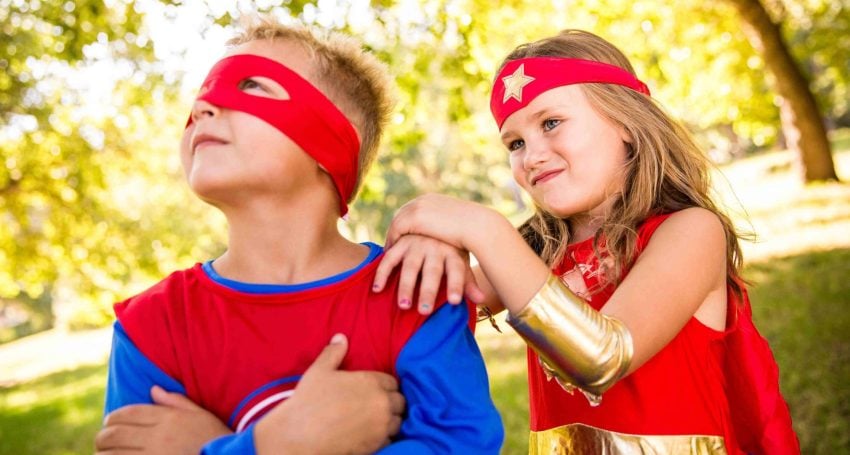Lessons in collaboration from a vintage cartoon
Reflections
“Ultimately Justice League is a story about finding collective strength through helping others and receiving help from others. The specific, often curious, vulnerabilities of the Super Friends characters show that we all need help sometimes,” says The Rev’d Cameron Freese from East Redland Anglicans

One of the interesting things I have observed over the last 20 years is the resurging interest in superhero pop culture. The constant stream of movies and remakes and TV series has been extraordinary. In some cases this has given us access to characters we otherwise would not have encountered. With this in mind, I must admit that I am a big fan of the superhero narrative. And, while I am a Batman enthusiast (particularly the TV version from the 1960s) and the DC Universe, my favourite will always be Marvel Comics’ Spider-Man.
However, I have been reflecting on DC’s Justice League a little bit of late – probably because I recently watched the “Snyder cut” again. Of course, this always takes me back to my favourite Justice League version – the 1970s-1980s cartoon TV series, Super Friends. And, trust me on this, when that happens YouTube cops a hammering.
Regardless of the version, there are some fundamentals that are shared across all Justice League iterations.
After undertaking some essential Internet research, I discovered that the individual members of the Justice League (first appearing in DC Comics’ The Brave and the Bold #28 in March 1960) originally operated solely within their own respective territories. There certainly were times when battling their super-powered adversaries required a bit of extra assistance, but they rarely interacted with other heroes.
However, as the story goes, aliens from the planet Appellax came to Earth seeking to conquer it. This naturally gains the attention of Earth’s most well-known heroes – The Flash, Green Lantern, Aquaman, Wonder Woman, the Martian Manhunter and later, Superman and Batman (this group is certainly a gender-imbalanced reflection of the 1960s).
An important thing to note here is that individually they all fell to the Appellaxian Wood-King, but by combining their strengths and gifts, the heroes overcome their foe. Lots of interesting stuff going on here, but what can we learn?
Advertisement
Looking at the Justice League crew, I am aware that each hero has their own unique skillset that can accomplish many wonders, but when trying to save the world from destruction from the likes of Lex Luthor, Darkseid, Steppenwolf or whomever, it seems that not one superhero can do everything, no matter how gifted they are.
Ultimately, the Justice League is a story about finding collective strength through helping others and receiving help from others. The specific, often curious, vulnerabilities of the Super Friends characters show that we all need help sometimes.
For instance, Batman is the brains of the group, but has no superpowers. Let us be honest, Batman’s “super power” is that he is rich, which is why he can afford to buy and build the equipment he needs to be effective.
Superman is invulnerable to every kind of threat, except Kryptonite and, if memory serves, magic – this is evident in Superman’s interactions with Mister Mxyzptlk.
Supergirl was a later member and she shared the same strengths and weaknesses as Superman – clearly a larger Kryptonian problem is at play.
Advertisement
Aquaman can talk to aquatic creatures, but can get dehydrated like a normal human. And, to be fair, Aquaman has the added problem so eloquently expressed by The Big Bang Theory’s Rajesh Koothrappali when he had to dress up as Aquaman: “I don’t want to be Aquaman. He sucks.” However, I think Jason Momoa’s version has gone a long way to fixing that perception since.
Wonder Woman is part Greek God. She has superhuman strength and speed and can fly, but her main weakness is her vulnerability to bullets and projectiles, which can pierce her skin.
The Flash has super speed and can travel through time, but his weakness is cold temperature because his molecules cannot vibrate at their normal speed if the cold slows them down.
Stargirl – a member of the Justice Society of America before joining the Justice League – had no inherent powers. Her abilities come from her cosmic converter belt and cosmic staff, which give her super strength, speed, stamina, flight and cosmic energy manipulation.
So the Justice League team reminds us that nobody is perfect, and yet each individual brings something special to the table that the other heroes can benefit from.
What is most inspiring about the Justice League is that these heroes continuously left their egos and self-interest at the door, trusting and working alongside one another to save the world from a threat that was much bigger than each hero alone.
It is important to remember that we each have unique abilities much like superheroes, but when we unite with others, we are much stronger. Working together can lead to so many positive outcomes – learning new skills, self-discovery and improvement, working through church changes, parish growth, and so on.
Indeed, it is heart-warming to think that we can find strength through helping one another and receiving help from others.
It is worth remembering at this time when we contemplate these things, what Queen Elizabeth II once said, “Whatever life throws at us, our individual responses will be all the stronger for working together and sharing the load.”
Editor’s note: If you have a parish collaboration story that you would like to share, please email the anglican focus editor, Michelle McDonald. She would love to hear from you!





